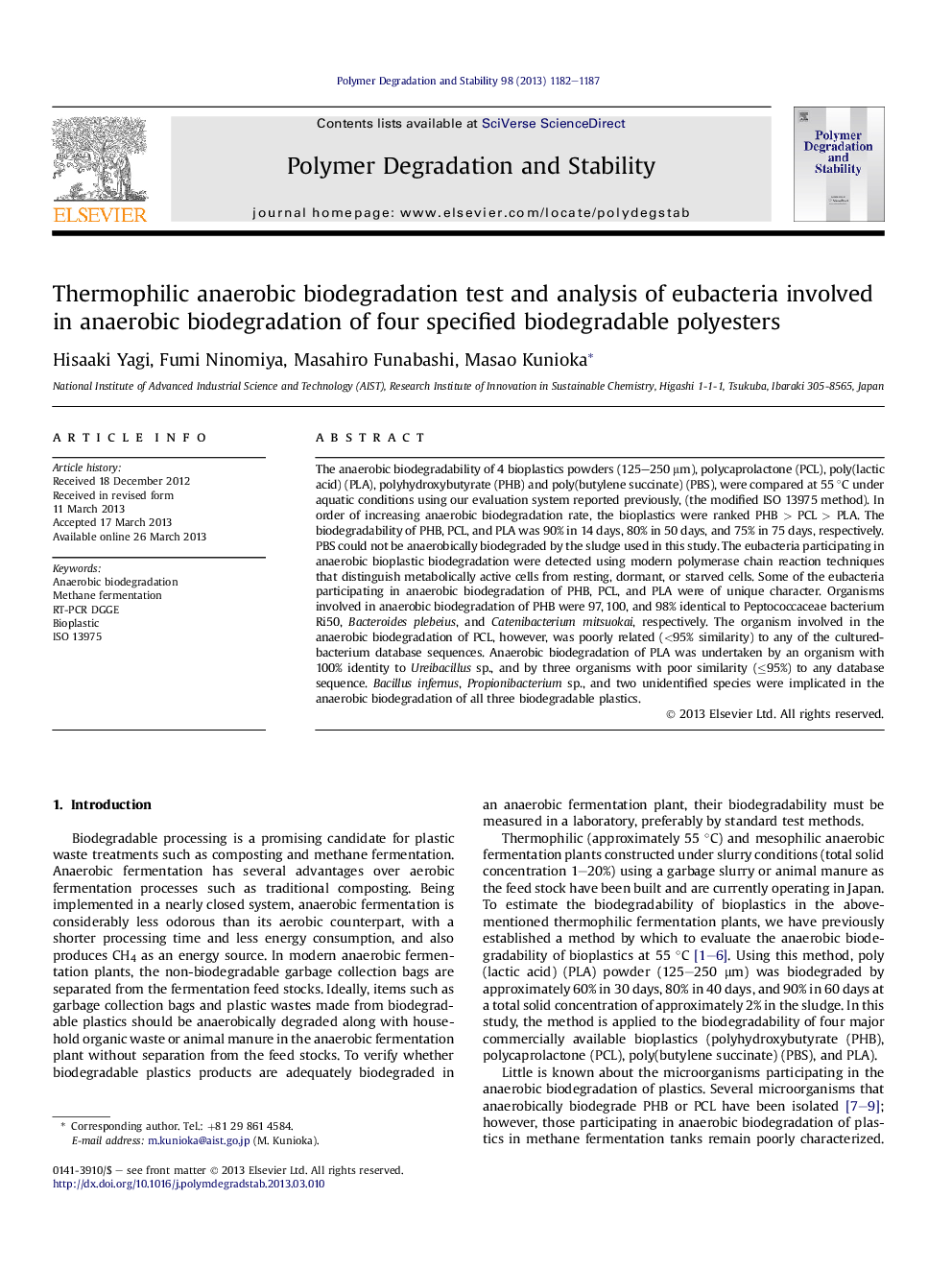| Article ID | Journal | Published Year | Pages | File Type |
|---|---|---|---|---|
| 5202132 | Polymer Degradation and Stability | 2013 | 6 Pages |
Abstract
The anaerobic biodegradability of 4 bioplastics powders (125-250 μm), polycaprolactone (PCL), poly(lactic acid) (PLA), polyhydroxybutyrate (PHB) and poly(butylene succinate) (PBS), were compared at 55 °C under aquatic conditions using our evaluation system reported previously, (the modified ISO 13975 method). In order of increasing anaerobic biodegradation rate, the bioplastics were ranked PHB > PCL > PLA. The biodegradability of PHB, PCL, and PLA was 90% in 14 days, 80% in 50 days, and 75% in 75 days, respectively. PBS could not be anaerobically biodegraded by the sludge used in this study. The eubacteria participating in anaerobic bioplastic biodegradation were detected using modern polymerase chain reaction techniques that distinguish metabolically active cells from resting, dormant, or starved cells. Some of the eubacteria participating in anaerobic biodegradation of PHB, PCL, and PLA were of unique character. Organisms involved in anaerobic biodegradation of PHB were 97, 100, and 98% identical to Peptococcaceae bacterium Ri50, Bacteroides plebeius, and Catenibacterium mitsuokai, respectively. The organism involved in the anaerobic biodegradation of PCL, however, was poorly related (<95% similarity) to any of the cultured-bacterium database sequences. Anaerobic biodegradation of PLA was undertaken by an organism with 100% identity to Ureibacillus sp., and by three organisms with poor similarity (â¤95%) to any database sequence. Bacillus infernus, Propionibacterium sp., and two unidentified species were implicated in the anaerobic biodegradation of all three biodegradable plastics.
Related Topics
Physical Sciences and Engineering
Chemistry
Organic Chemistry
Authors
Hisaaki Yagi, Fumi Ninomiya, Masahiro Funabashi, Masao Kunioka,
